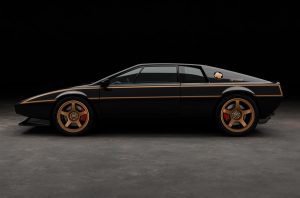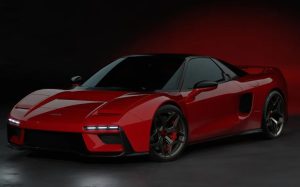How to Buy the Best 2005–06 Ford GT

At the dawn of the 2000s, Ford turned to its own legend for inspiration. The company’s centennial was approaching, and after winning applause for the retro-inspired Thunderbird and developing a Mustang that echoed late-1960s muscle, Ford aimed higher. It revived the spirit of the GT40—its 1960s Le Mans conqueror—with a modern supercar that could be both a road-going icon and a track-capable weapon. The result was the 2005–2006 Ford GT, a car that delivered analog engagement, supercharged V8 thunder, and design that feels timeless two decades later.
Previewed as the 2002 GT40 concept, the production GT arrived with remarkably few changes. Designer Camilo Pardo, working under J Mays, reimagined the original’s low, wide stance and functional beauty for a new century. The GT retained the signature nose, prominent rear haunches, and long rear deck, but wrapped it in modern aerodynamic thinking and lightweight construction. Unlike the 1960s GT40—a race car adapted for the street—the new GT was a road car that could stare down the world’s thoroughbreds, from Ferrari’s 360 Modena to Porsche’s Carrera GT.
The engineering program moved at breakneck speed. Ford’s Special Vehicle Teams partnered with Roush Industries, Mayflower Vehicle Systems, Lear Corporation, and Saleen Special Vehicles to bring the car from concept to production in about two years. The GT sits on an aluminum space frame with extensive use of castings, extrusions, and Super Plastic Formed panels. Its footprint is larger than the original GT40—longer, wider, and taller—yet its stance and proportions strike the same dramatic notes. Inside, the seven-gauge instrument array, toggle switches, exposed metal finishes, and carbon-fiber-shell seats pay homage without feeling nostalgic. It’s a distilled, purpose-built cockpit.
The star sits under glass: a hand-built, 5.4-liter all-aluminum V8 with dual overhead cams, 32 valves, and a dry-sump lubrication system. Fed by a twin-screw Eaton supercharger and an air-to-liquid intercooler, it produced 550 hp at 6,500 rpm and 500 lb-ft at 3,750. A Ricardo six-speed manual transaxle with a twin-disc clutch was the only transmission—a declaration of intent in an era drifting toward paddle shifters. Tested performance matched the specs: 0–60 mph in the low 3s, quarter-mile in the mid-11s, and a top speed of around 205 mph. Yet for all its ferocity, the GT surprised with tractability and a friendly clutch, making it truly usable.
Standard equipment included HID headlights, keyless entry, and power accessories. Buyers could tailor their car with Le Mans over-the-top stripes, lighter forged BBS wheels, colored brake calipers, and a McIntosh audio system. For 2006, Ford introduced the Heritage Livery Package in blue and orange—an overt nod to the Gulf-liveried GT40s that dominated Le Mans. Over two model years, Ford built 4,038 GTs, including 343 Heritage cars. Dealers often charged well over the original list price; time has validated the hype. Values have steadily climbed, with market data now placing most cars in the mid-six-figure range, and top examples—especially Heritage cars with delivery mileage—reaching into seven figures.
If you’re serious about buying one, approach the GT like the hand-built, low-production exotic it is. Parts availability can be challenging, though many service items still flow through Ford channels and the specialist community is strong. Pre-purchase inspections are essential. Seek out a Ford GT–trained technician or a recognized specialist who knows the platform inside and out. Ownership history, documentation, and service records matter, and in many cases, a well-maintained, higher-mileage car is a better bet than a low-mile “statue” that hasn’t been exercised or serviced.
There are a few recurring issues to check. The instrument cluster electronics can be damaged by jump-starting; verify all gauges work and keep the car on a battery maintainer if it sits. The painted magnesium center console can corrode and may require refinishing. Confirm completion of safety recalls, including Takata airbag inflator replacements and a campaign addressing half-shaft hardware on some late-2005 and early-2006 cars.
Body and chassis are aluminum, so rust is not the enemy, but oxidation is. Replacement of major exterior panels can be expensive, and some components are no longer available new. Inspect low-hanging aero pieces for damage and study the door tops, which extend into the roof and need space to open cleanly. Early control arms were recalled and replaced; later cars received forged pieces. With many GTs driven sparingly, check tire date codes—old rubber undermines performance and safety.
Mechanically, the engine is robust, provided it’s maintained properly. The dry-sump system requires careful attention, including regular inspection of the oil-pump drive belt. Oil changes are more involved due to the underbody panels and the system’s large capacity. Many cars have mild power upgrades: smaller supercharger pulleys, intake and throttle body changes, ECU remaps, or freer-flowing exhausts. These are common and generally safe, but original take-off parts add value, so ask if they’re included. The Ricardo transaxle is strong and praised for its shift quality; some track-driven cars benefit from an auxiliary oil cooler.
The 2005–06 GT’s magic lies in its synthesis. It’s a modern supercar that feels mechanical and alive, a shape that honors history without being trapped by it, and a statement of capability that helped reset Ford’s image in the 21st century. For collectors, it’s a blue-chip American icon. For drivers, it’s a rare supercar that genuinely wants to be used. Find a well-cared-for example, verify the known touchpoints, and you’ll own one of the most charismatic and enduring performance cars of its era.
Protect your classic with a custom car cover from Cover Company.
Learn more at https://www.cover-company.com









